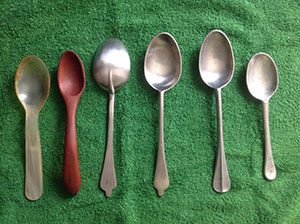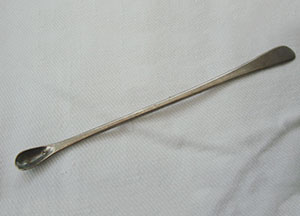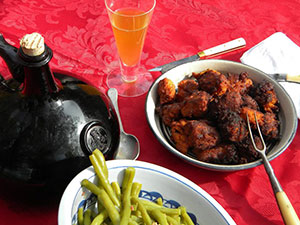How Did the Table Look?

A well-set dining table at Hampton House.
People who study foodways are interested in learning how food was served, including the tableware that was used. In the colonial period, middling households used ceramic and pewter plates and dishes, while the poor, servants, and enslaved people often used bowls and drinking vessels made from wood or simple ceramic. Archaeologists working in the dig sites of slave quarters have uncovered unfired earthenware pots. Masters typically provided a single iron pot to enslaved families, requiring them to make their own cookware if they wanted more than one cooking pot.
The gentry often ate their meals in formal dining rooms set with bleached and ironed table linens. Their food was served on fine, imported porcelain or delftware plates and bowls, and they sipped their beverages from delicate glassware. Their tables overflowed with roasts, soups, puddings, and cakes.
Skilled tradespeople and other middling sorts of people ate at tables set with unbleached, linen tablecloths. Food was eaten off simple pewter plates. Cider or ale was served in large stoneware tankards (mugs). Poor and lower sorts people, servants, and enslaved people ate their meals off whatever objects were available—perhaps a broken plate from the master’s kitchen or a simple wooden trencher. Their meals were typically not very nutritious or balanced and may have included corn cakes and salted pork or fish.
Regardless of the social class, the utensils used in the colonial period looked very different from the ones you see on your own table today. Forks in colonial times only had two tines (sharp points) and were typically used to hold the meat, while the knife was used to cut it. Once you cut your meat, you used the knife to stab the piece of meat and put it in your mouth. Spoons came in a variety of sizes and were used for many things. Holes were cut in the base of some spoons so that loose tea could be scooped out of tea cups. If tea leaves clogged a teapot’s spout, you used the spoon’s pointed end to unclog it. There are even surviving examples of very small spoons with long handles that were used to clean wax from a person’s ears!







